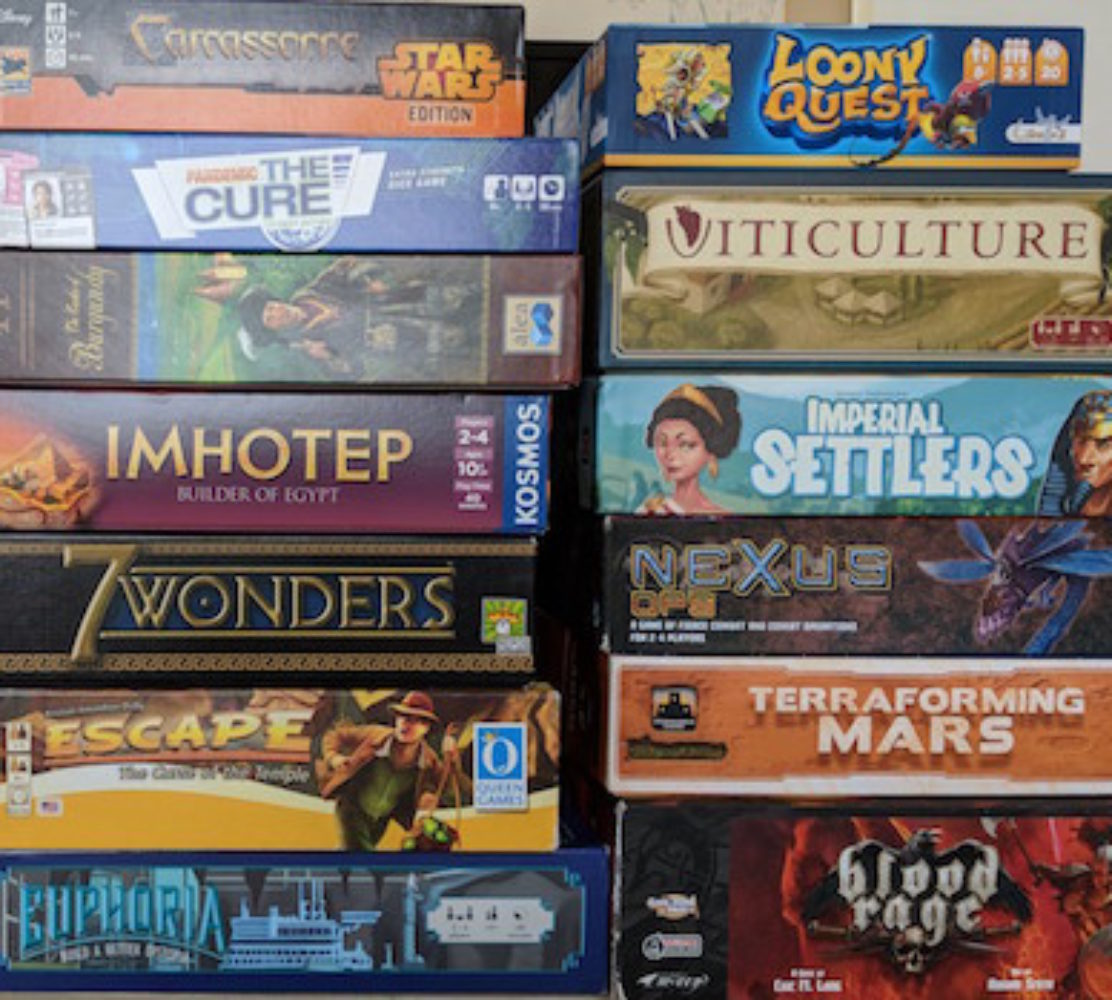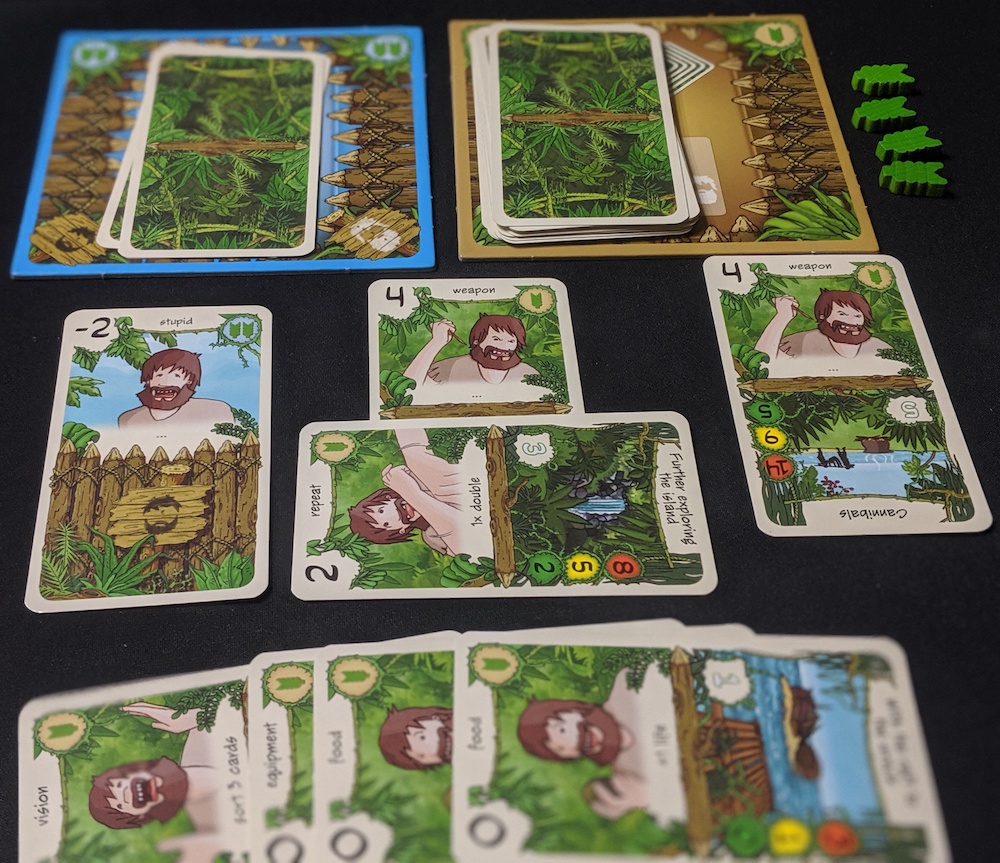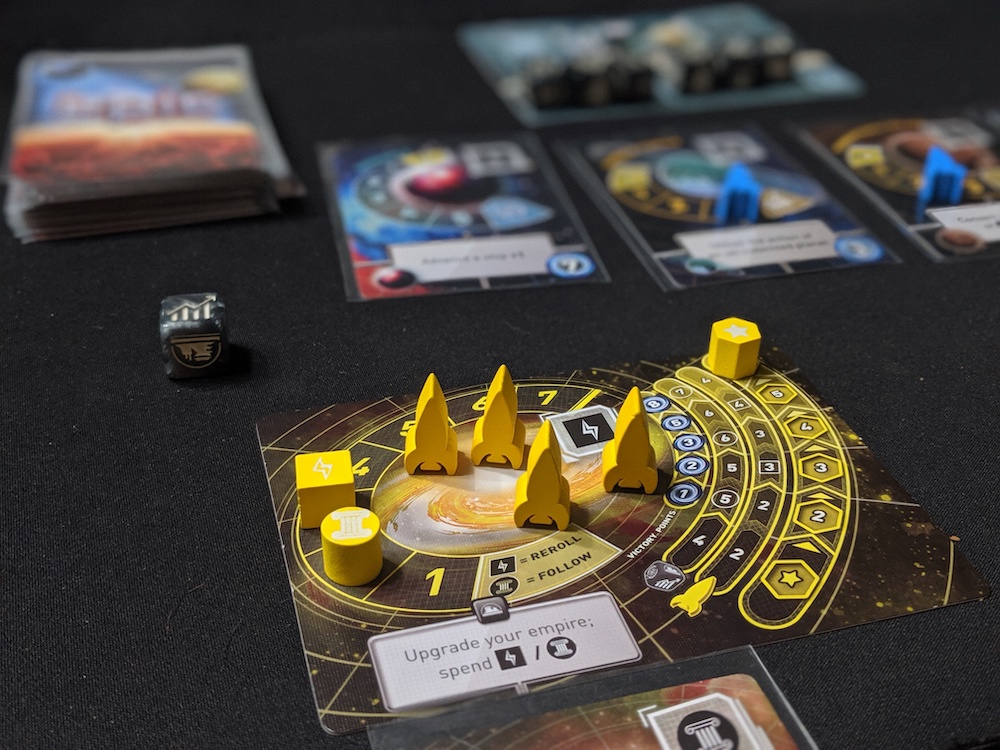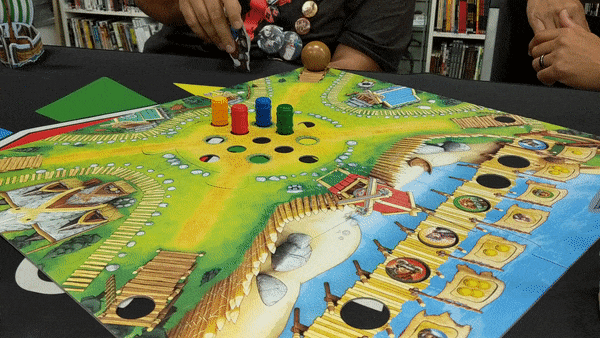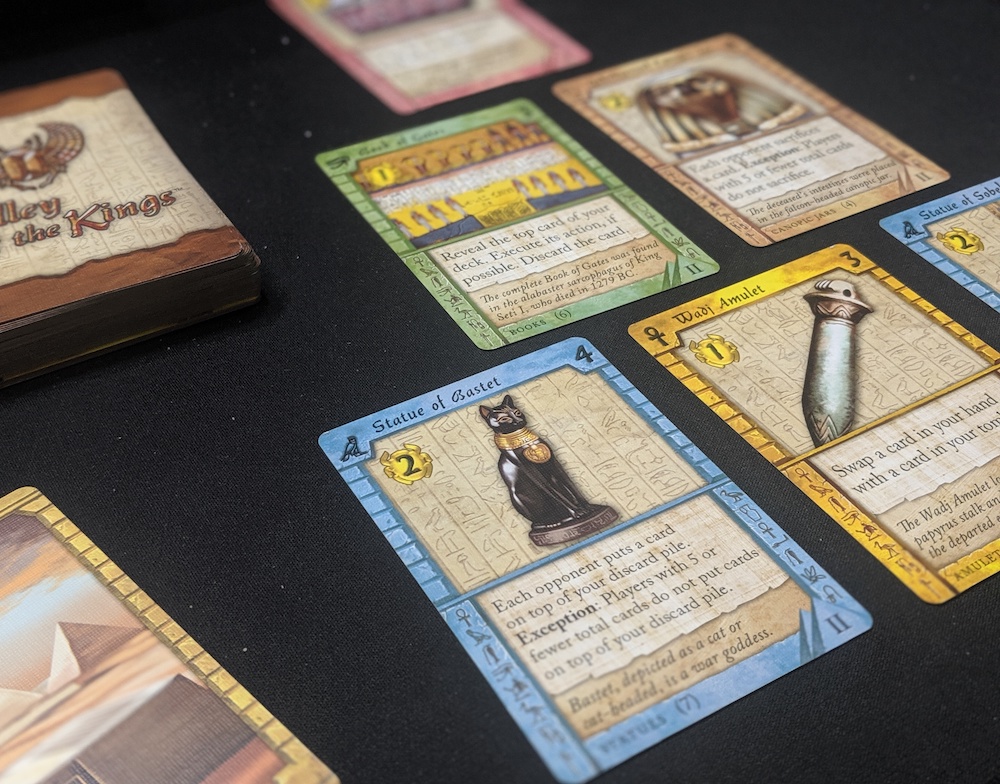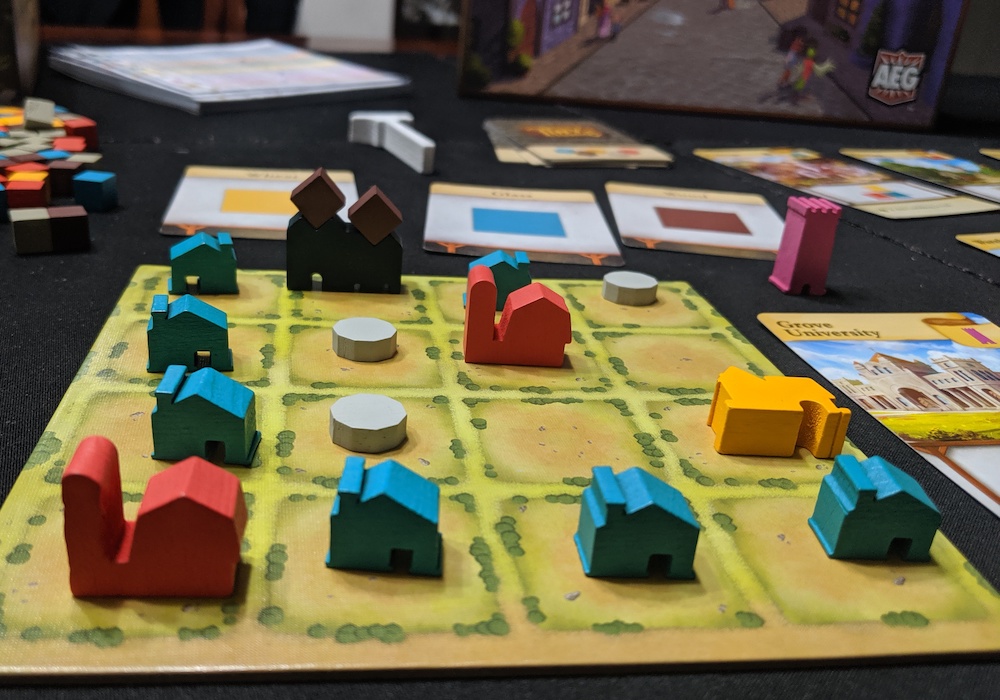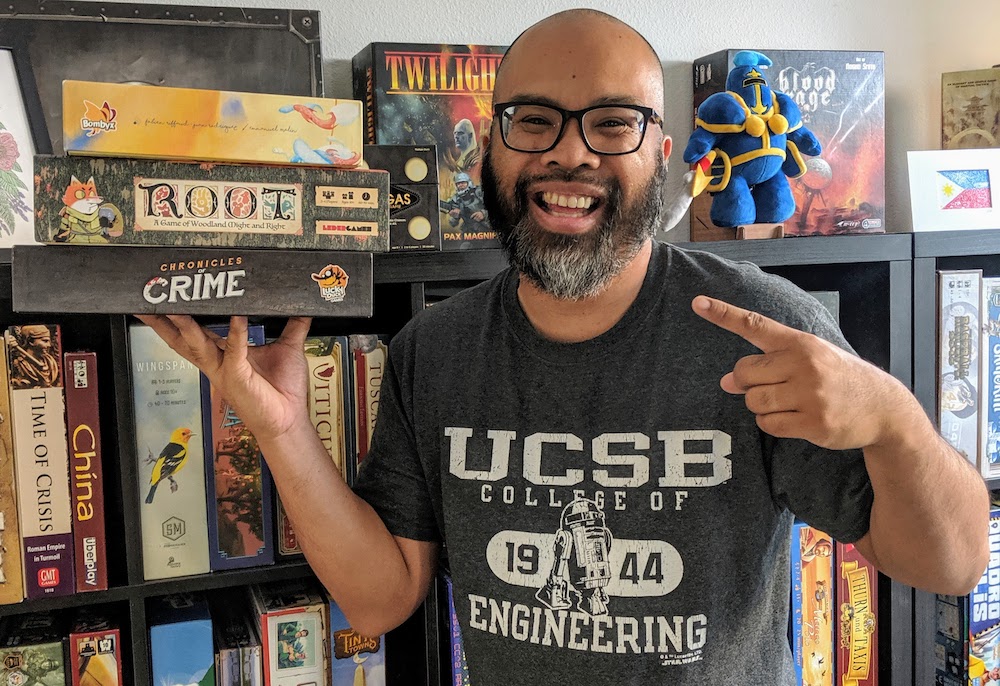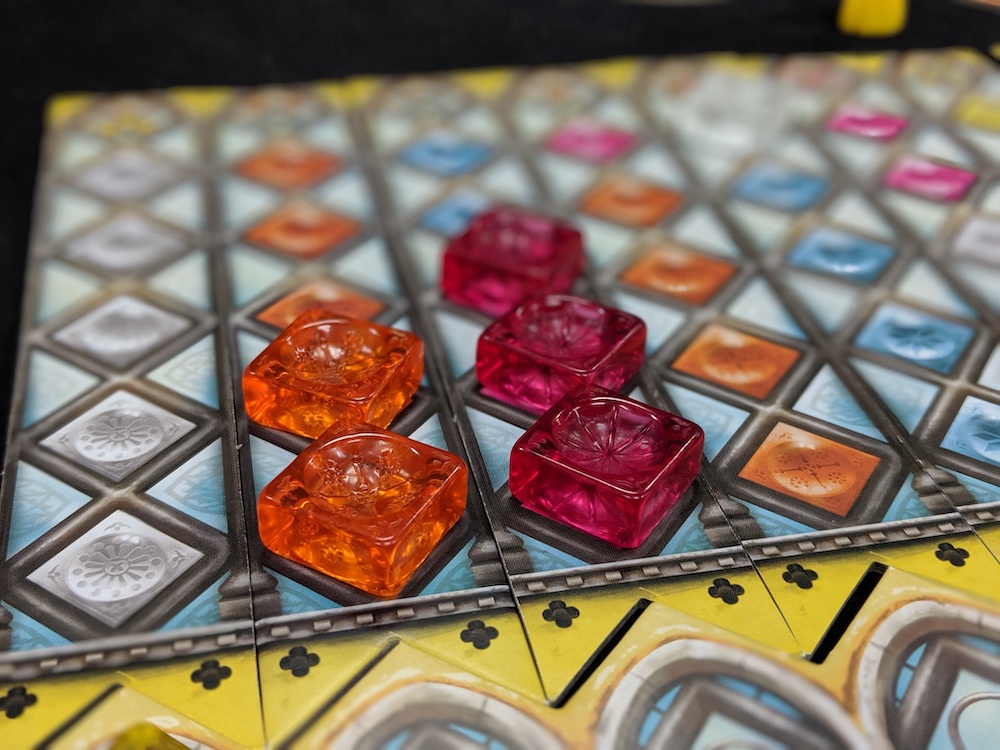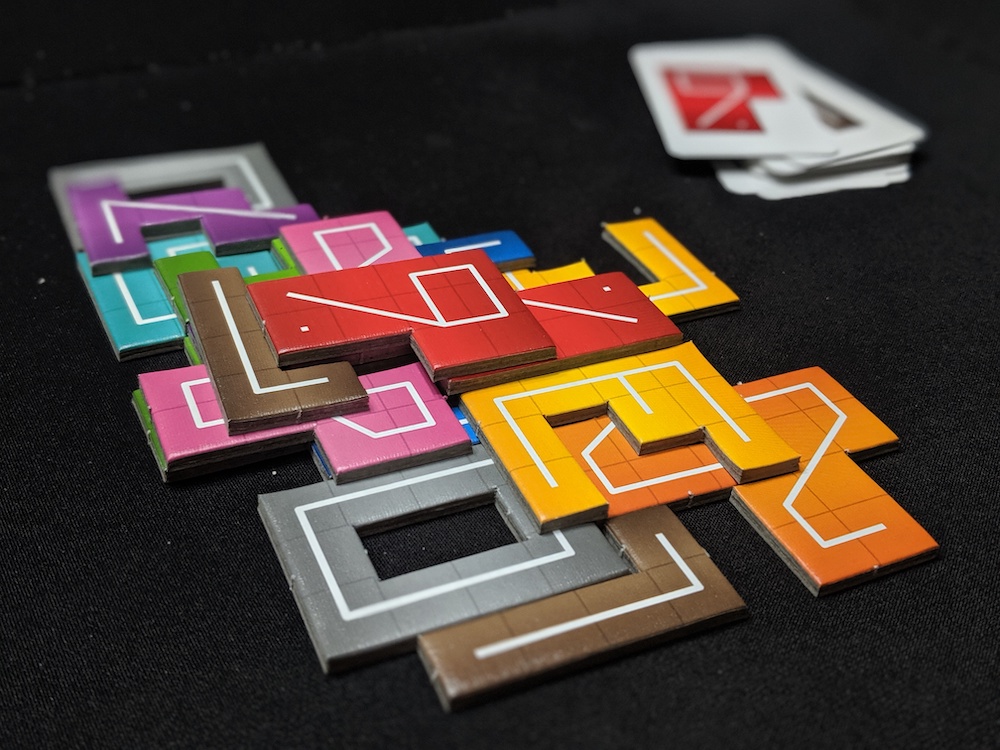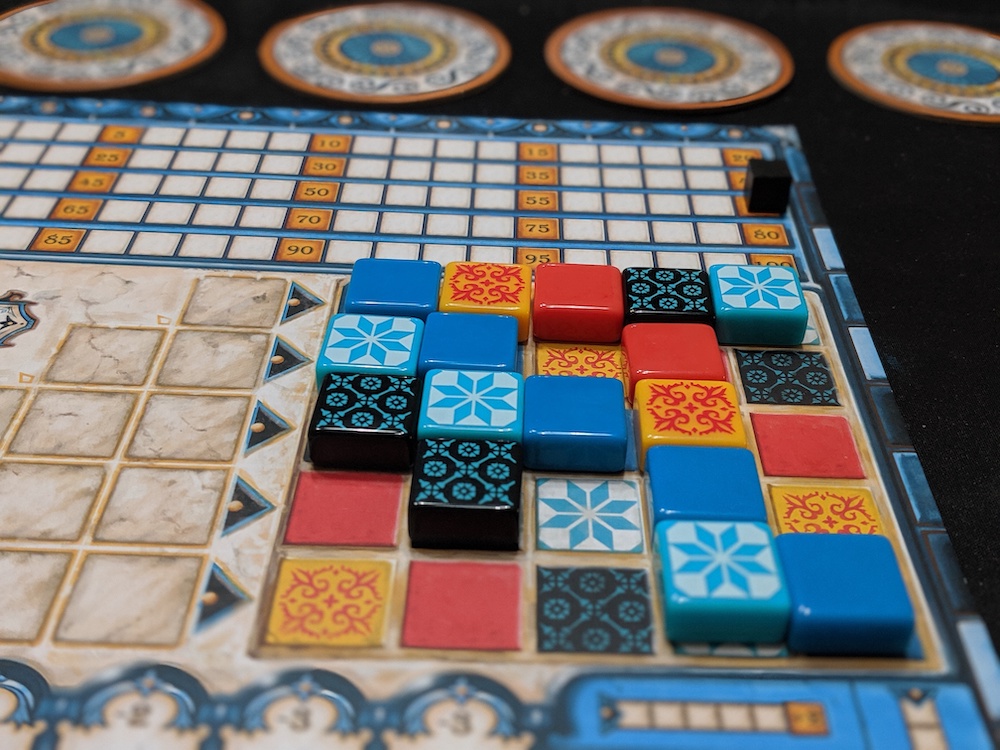I’m posting about a game every day in September! Here’s a link to yesterday’s post.
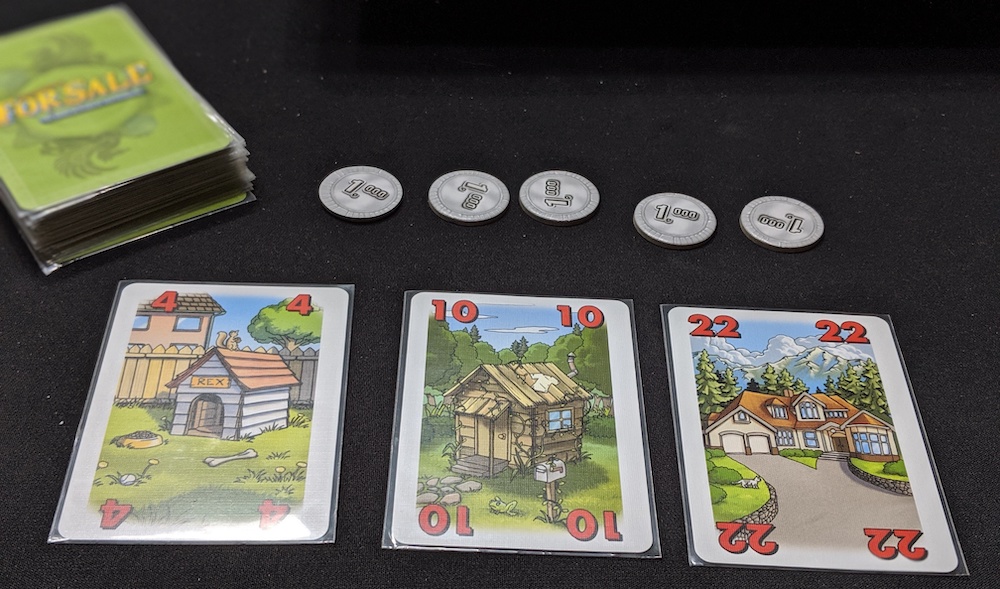
According to my BGG logged plays, I’m coming up on my fourth anniversary of first playing For Sale. I had just started going to a weekly game night at my local comic book store and I was eager to play anything and everything.
On an October night of 2015 I played For Sale. The other guys in the group had played it before and recommended it as a filler game before other players arrived. I immediately took to the game’s straightforward structure with its bidding rounds followed by the buying rounds. Although I’m not one for bidding games, For Sale is the one exception to the rule (okay, also Ra, so make it two exceptions to the rule).
It was an insta-buy for me after the first game. After that first play I asked the group to play it again since it was so quick and they agreed, thus confirming that I must get my own copy so I could share it with my family and friends.
I also stumbled upon a BGG solo variant which is aptly named For $olitaire. It’s a simple AI named Jessica that works surprisingly well. Tonight I solo-ed the game and lost, 89-77.
Yes, a rematch has been called. Unless I can find some human players to play For Sale soon.
